Measey Lab Alumni
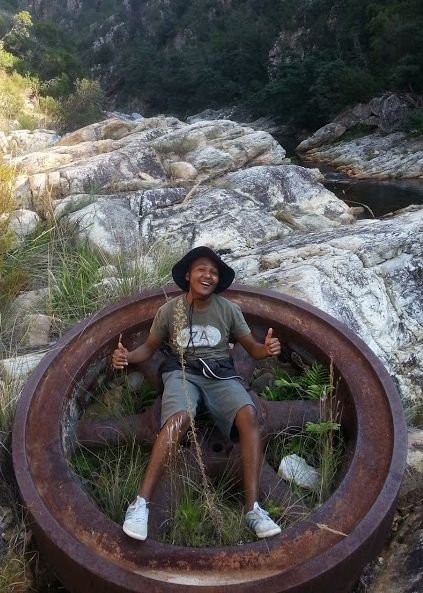
Mohlamatsane Mokhatla
Evaluating the effects of changing global climate on herpetofaunal (amphibians and reptiles) functional groups of South Africa, using physiologically determined mechanistic modelling approach
Global climate has warmed by about 0.6°C on average in the last century and this trend is expected to continue. In response to these changes, species have been reported to: i) shift their distribution ranges, ii) their time activity (phenology) or, iii) have become locally extinct. Thus, to mitigate against the predicted effects of climate change, we need to accurately predict the response of our most vulnerable fauna (ectothermic vertebrates: reptiles and amphibians). Little is known on how future changes in climate systems will affect South African vertebrate ectotherms. Thus, using a multi-disciplinary line of evidence, the aim of this study is to synergise data from multiple lines of evidence (physiological, performance and ecological) and synergise them into Species Distribution Models (SDMs) to aid in the responses of different functional groups of South African ectothermic vertebrates to climate change. This study will produce a suite of mechanistic models for functional groups of ectothermic vertebrates in South Africa to make more reliable predictions on the shifts of biological communities in response to climate change.
Graduatd December 2018
Stellenbosch University
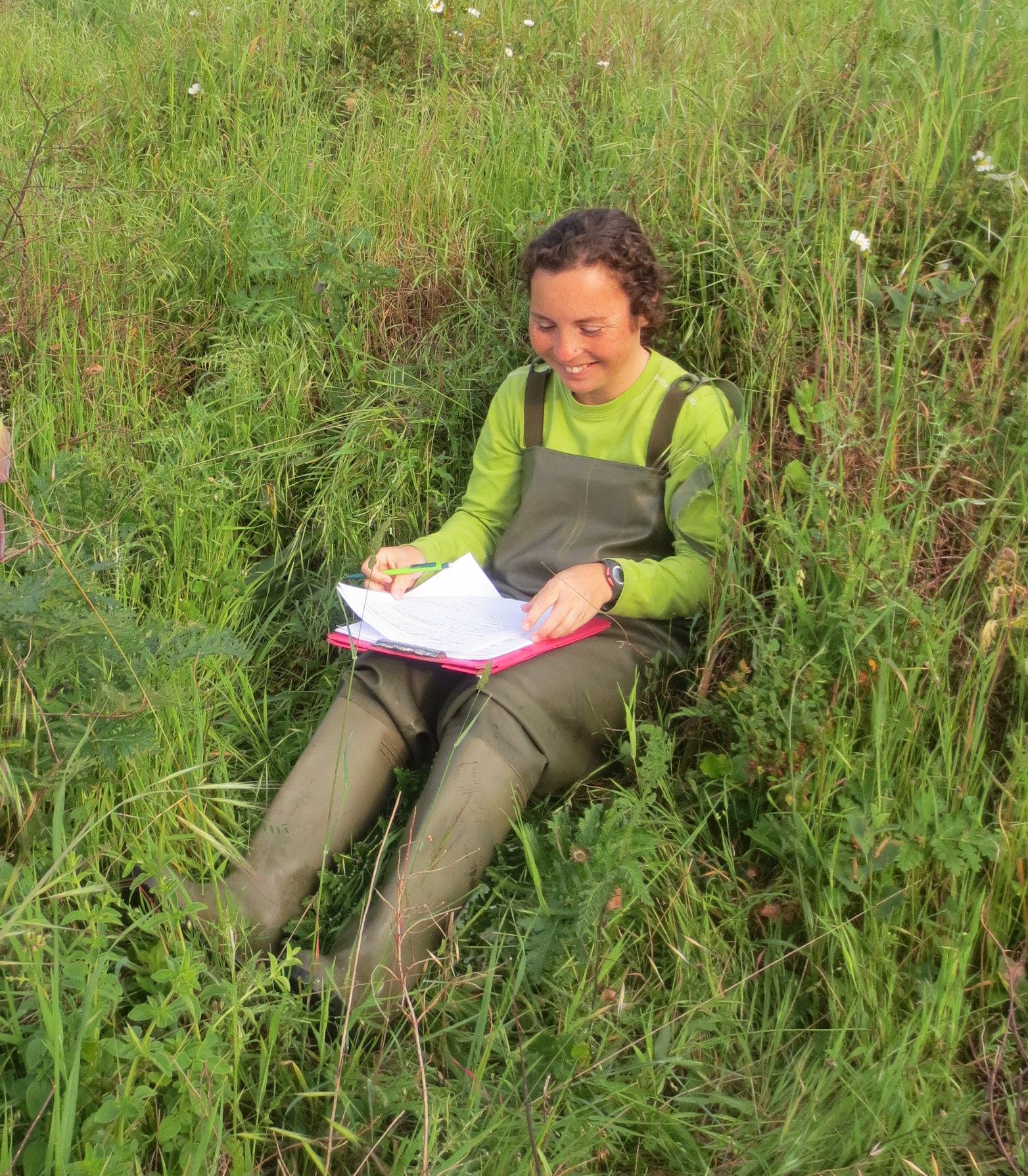
Ana Nunes
Fighting crayfish invasions in South Africa: how bad is the situation and what can be done?
Freshwater ecosystems are some of the most endangered ecosystems in the world and the introduction of alien species is widely recognised as one of its main threats. Freshwater alien crayfish are one of the examples, causing serious negative environmental impacts at multiple trophic levels when introduced in freshwater ecosystems. Although there are no native freshwater crayfish species in mainland Africa, several non-native mainly Australian and North American crayfish species have been introduced to continental Africa since the 1970s. In South Africa, four species of alien crayfish are listed under NEMBA’s National List of Invasive Freshwater Invertebrate Species: the Danube crayfish (Astacus leptodactylus), the common yabby (Cherax destructor), the Australian red-claw crayfish (Cherax quadricarinatus) and the marron (Cherax tenuimanus). However, the presence, distribution, density and impacts of these species are still very poorly known in this country. The main goal of my post-doc is to generate the urgently needed detailed information on the status and impacts of invasive crayfish species in South Africa, using a combined approach of field work and mesocosm experiments.
Completed June 2017
with Prof. Olaf Weyl (SAIAB)
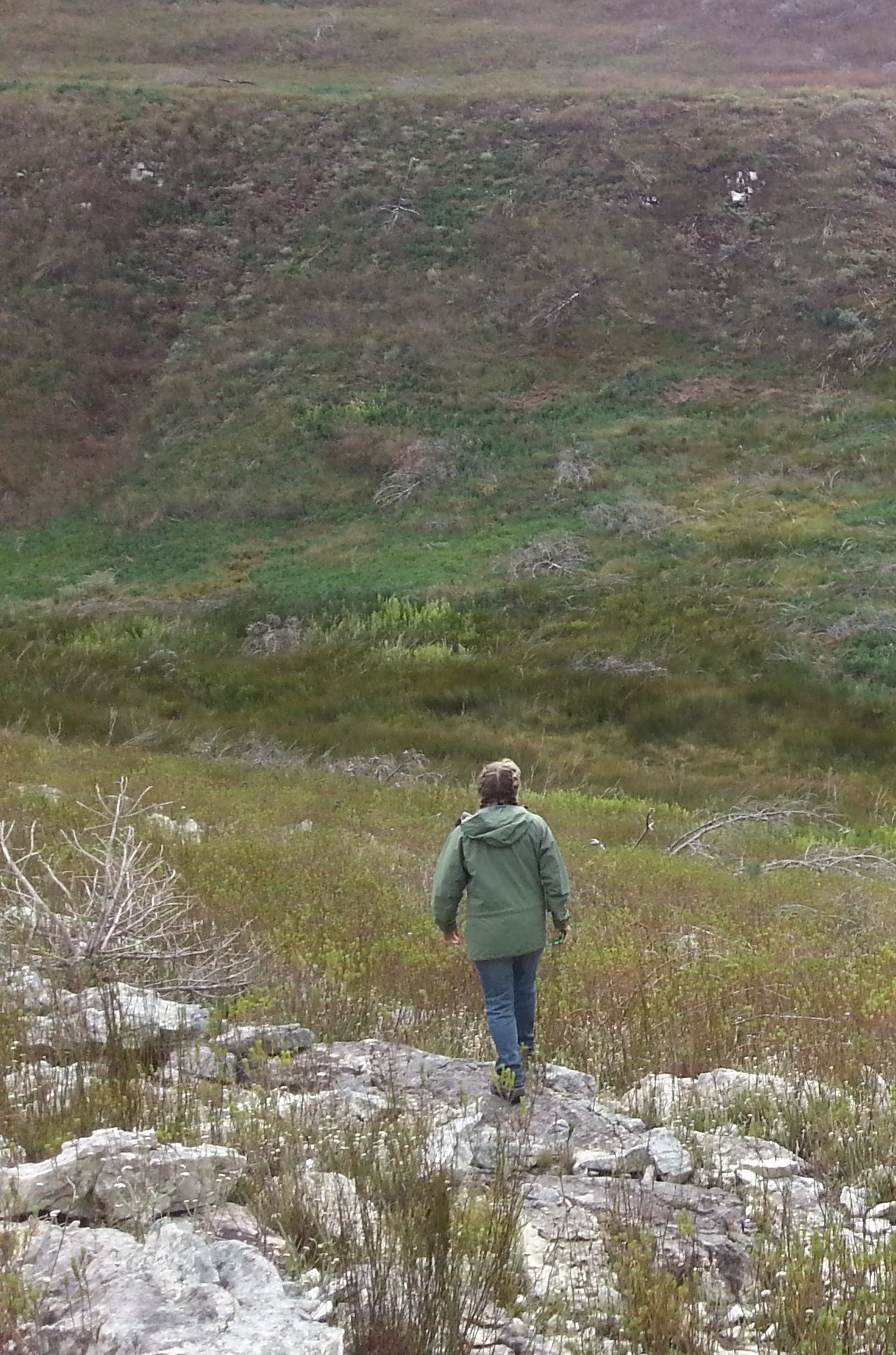
Jen Fill
Evaluating restoration success in mountain fynbos
Invasive, fire-adapted trees and shrubs are a serious problem in Western Cape fynbos shrublands. This region sustains a high concentration of invasive alien plants and threatened fynbos amphibian species. Invasive plants and their influence on fire regimes may have serious negative impacts on amphibian survival and reproduction, but this idea has remained untested for fynbos species. There are almost no assessments of how effective invasive species control efforts have been in both conserving endemic vertebrates and restoring fynbos vegetation. My research will address the cost-effectiveness of control efforts in fynbos, and identify those approaches that are most likely to lead to success. My research has two objectives: 1) To examine the effects of invasive species removal activities on Arthroleptella populations, a genus endemic to mountain fynbos. 2) To identify factors that influence the success of control projects in promoting native fynbos recovery and supporting Arthroleptella populations. This research thus takes an integrative approach to linking invasion ecology and biodiversity research with restoration practice, and serves as a valuable scientific basis for determining the success of WfW control efforts.
Completed April 2017
with Prof. Brian van Wilgen (CIB-SU)

Max Mühlenhaupt
Max comes from the Free University in Berlin (Freie Universität Berlin) where he is studying for a MSc in Biology. Max reminds us that he is not an intern, but a co-investigator, and of course we are very happy to have him on board in this capacity. But I'm still going to file him under interns...
Examining the potential for evolutionary drivers behind biological invasions of Guttural Toads.
From November 2019
with James Baxter-Gilbert

Dan van Blerk
Impact of invasive fish on South Africa’s ghost frogs
South Africa boasts a remarkable diversity in stream-adapted endemic anurans, as well as a history in introductions of alien fish. For his Master's thesis, Dan will be looking for evidence of impacts on endemic, stream-adapted anurans by invasive fish in the Cape Fold Mountains. He will also incorporate environmental and habitat variables into a model that will hopefully shed light on which factors would best determine the presence or absence of tadpoles in mountain streams.
From January 2021
graduated in 2023 from Stellenbosch University
with Josie Pegg (SAIAB)
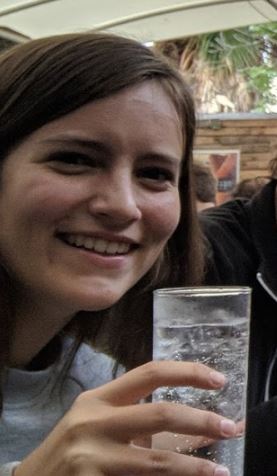
Carla Wagener
Spill your guts: the invasive amphibian gut microbiome
So far, no studies have determined the composition of gut microbial communities in invasive amphibian populations, nor their importance regarding invasion success. Invasive amphibians can potentially introduce microorganisms with new strains and/or microbes that can affect not only the health of native species, but the functionality of ecosystems. Single strains of microbes, their interactions and the entire gut microbiome might also play a major role in the invasion success of a species, by affecting host physiology and health. Research on invasive amphibian gut microbiomes can, therefore, have significant implications for our understanding of how gut microbial composition and diversity might affect invasive success in native ecosystems. I want to address these gaps in our knowledge of invasive amphibian gut microbiomes in my MSc.
Graduated March 2021 (with distinction)
with Morne du Plessis (SANBI)
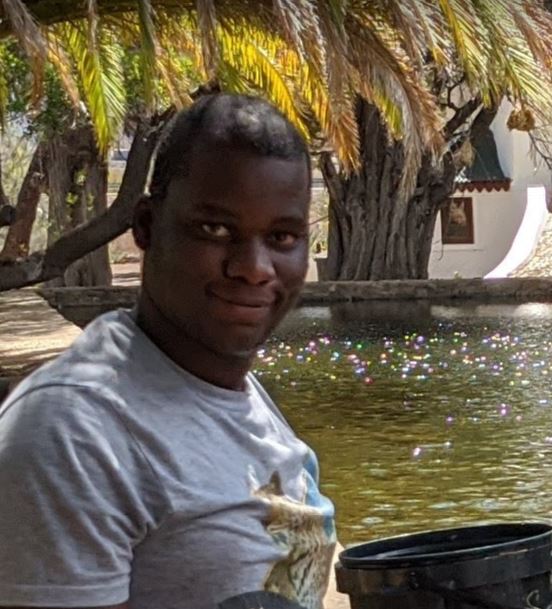
Sam Peta
The invasion ecology of Guttural toads
While we are starting to get a better picture about the Guttural toad invasions, we still have a lot to learn about their impact both as predators and prey to other species. In his MSc thesis, Sam will try to plot out networks of predators and prey using stable isotopes in both the invasive and native ranges.
Co-supervised with James Baxter-Gilbert
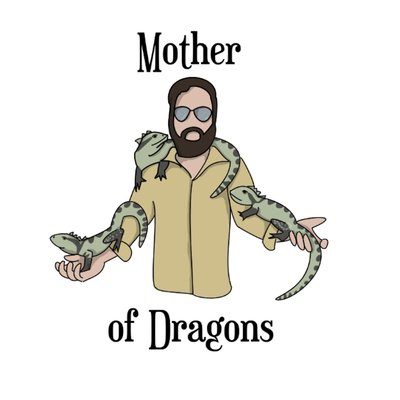
James Baxter-Gilbert
Invasion-derived phenotypic divergence: What traits promote invasion success in Guttural Toads?
I propose to use the model system of the Guttural Toad in Africa to understand their invasion success through the investigations of divergent phenotypic traits and rapid, localised evolution. This project will provide insight as to how these invasive populations are adapting to their novel environments. This may in turn provide the foundation for actions to be taken to weaken range expansion potential, (e.g., targeted gene flow). I also plan to utilize a similar research framework to that which has been used in studies of the invasive Cane Toad. This will allow direct comparison between the evolutionary processes and the phenotypic changes that facilitates invasion success in both species of invasive toad.
Finished April 2021
Stellenbosch University
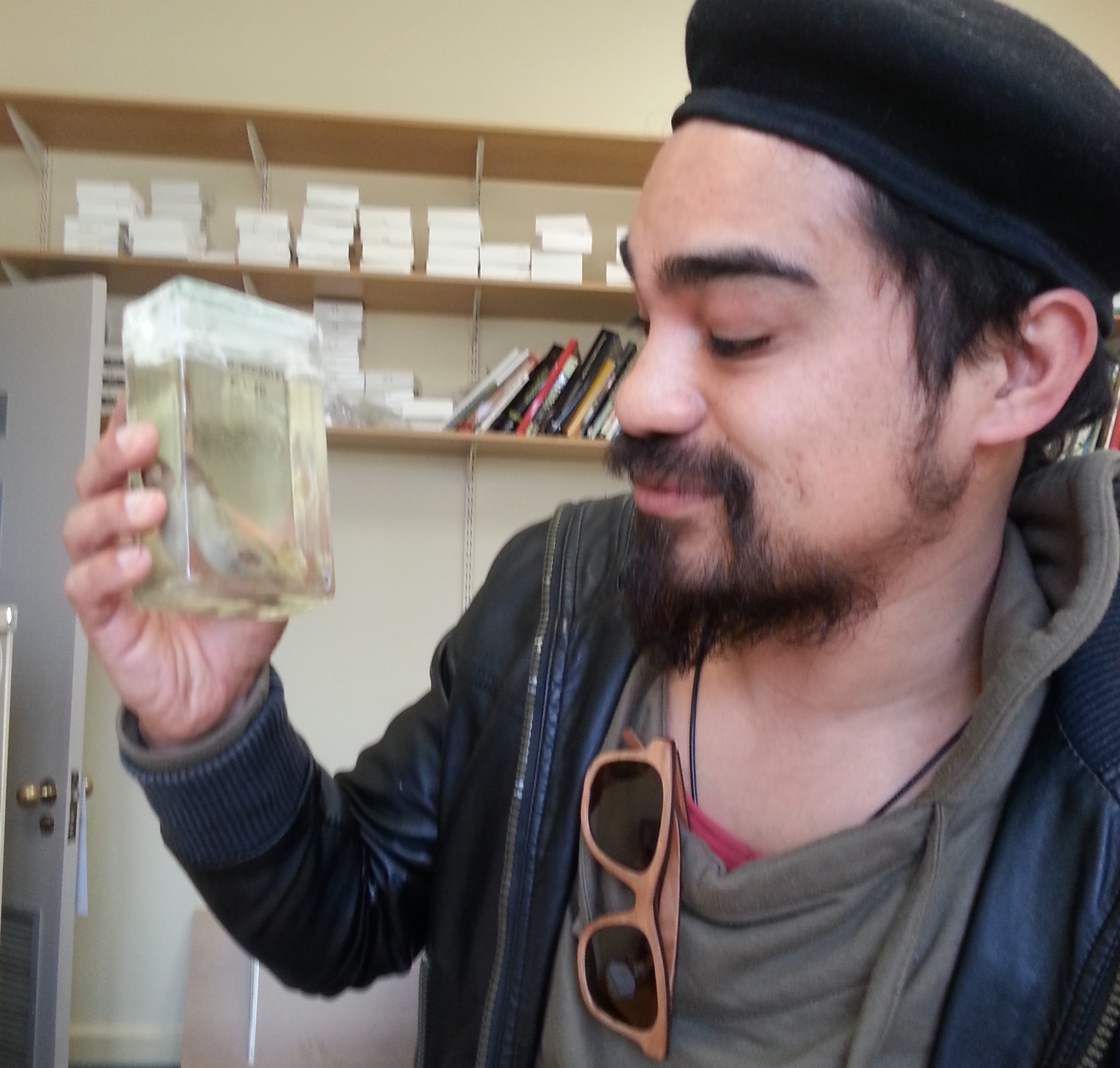
Zishan Ebrahim
Amphibian conservation in an urban park: A spatial approach to quantifying threats to Anura on the Cape peninsula.
Graduated in December 2017
Stellenbosch University
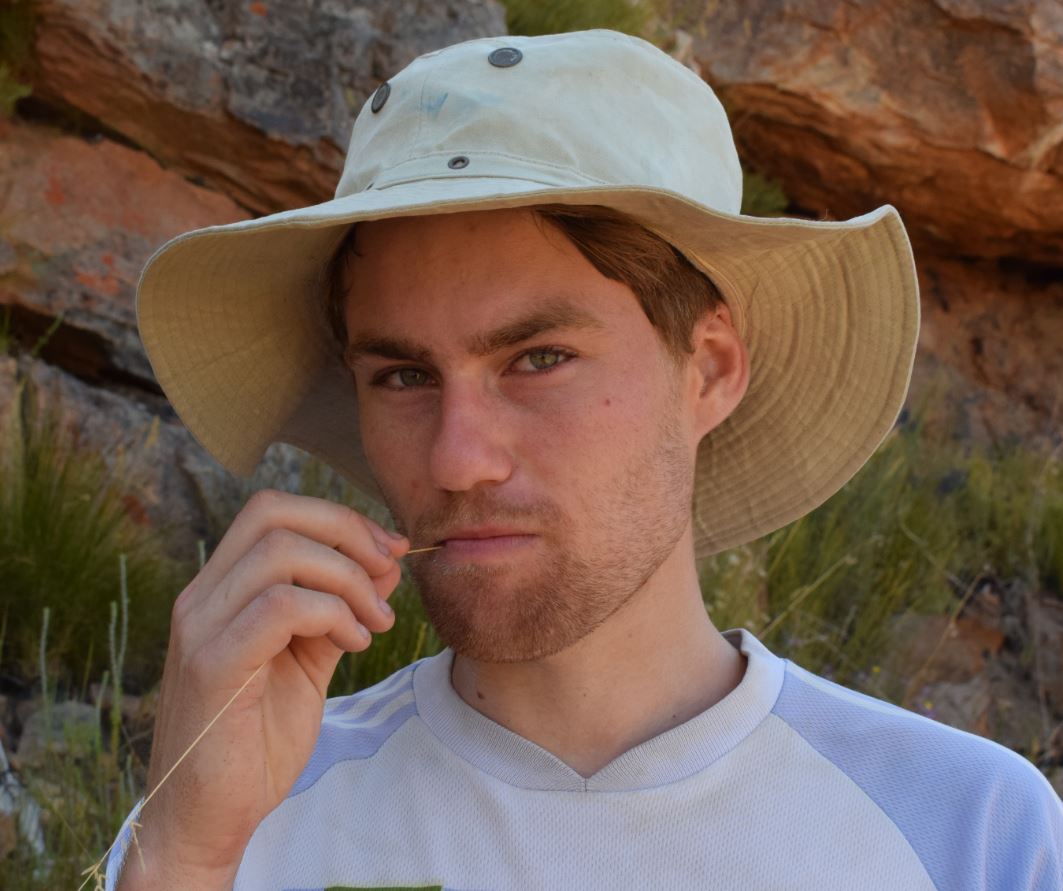
Oliver Angus
In a rough spot? Conservation of moss frogs in a pine invasion
Globally, the invasion of alien vegetation into natural habitats is recognised as one of the largest threats to biodiversity, and South Africa is no exception. Amphibians are particularly at risk, given their low dispersal abilities and reliance on microclimates. Arthroleptella rugosa, a Critically Endangered species of Moss frog, might epitomize the plight for survival in the face of an ongoing invasion. For my Honour’s project I will attempt to investigate the link between pine invasion into the range of A.rugosa, and male call density which is an indicator of breeding success. A technique known as acoustic spatial capture Recapture (aSCR) will be used to generate call data, which will then be related to the extent of invasion.
Andrew Turner (CapeNature)

Margo Paterson
Do African Clawed Frogs like Led Zeppelin?
African clawed frogs are effective global invaders due to their adaptability to diet and habitat type. It can be challenging to eliminate these frogs from the environment, as they are escape artists and tend to move overland like grease lightning. This study aims to test whether an alternative control measure may be used to get rid of the African clawed frogs. We will expose them to a noisy environment, in the hope that makes them uncomfortable enough to leave the pond. The question thus lies with whether clawed frogs prefer Eminem, Metallica, or perhaps some classical Mozart?
with Dr. James Baxter-Gilbert
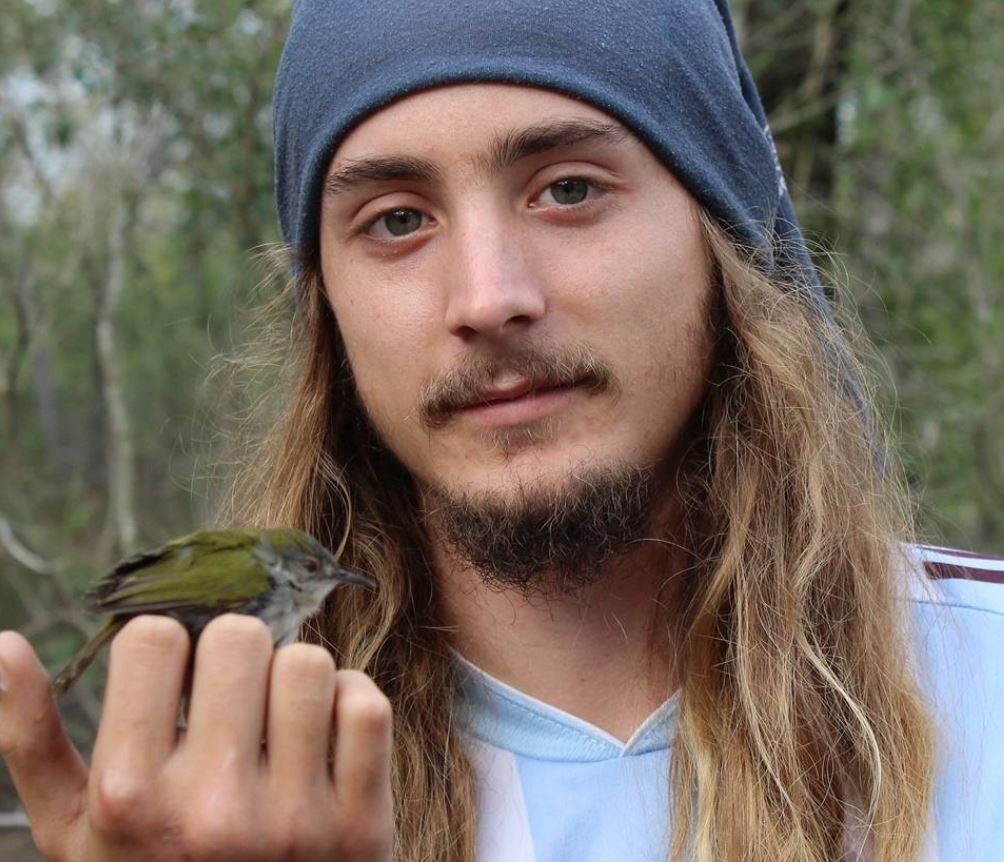
Damian van Aswegen
Assessing the impacts of alien snakes
For my honours project, I ask: What about the impact of alien snakes? I will attempt to assess the environmental and socio-economic impacts of invasive snakes on a global scale using the Environmental Impact Classification for Alien Taxa (EICAT) and Socio-Economic Impact Classification for Alien Taxa (SEICAT). This will categorise each invasive snake species by the severity of its impacts. This study will help in the future prioritisation of invasive snake species by policy makers and management.
Graduated December 2018
co-supervised with Sabrina Kumschick

Nitya Mohanty
Investigating amphibians in the pet trade
The amphibian pet-trade has emerged as a subject of conservation importance from the viewpoint of invasions, overexploitation, and diseases. Yet, systematic assessments of the pet-trade seldom test its predictors. Given that trade is dynamic and new species enter the trade frequently, it is essential to move beyond currently traded species and understand which species are likely to be traded in the future. In this study, I aim to characterize amphibian species in the pet-trade. Specifically, I am to i) collate a comprehensive list of traded species, ii) characterise taxonomic bias in traded species, and iii) evaluate life-history traits as predictors of traded species and trade volume.
From 2018 to 2019
Stellenbosch University

Reesher Kearns
No more singin’ in the rain? Chirping moss frogs and the ongoing drought
Cape Town’s current drought has become world renowned as the city is close to running out of water. But, how are the frogs faring? In this honours study, I will attempt to document and assess the change in calling density of the Cape Peninsula moss frog, Arthroleptella lightfooti, and whether this is related to the ongoing drought. An acoustic monitoring technique known as Acoustic Spatially Explicit Capture-Recapture (aSCR) will be used to estimate the male calling densities. This study can hopefully shed a light on how important digital advances in monitoring techniques are for conservation. This is particularly true for amphibian species, who are declining at an alarming rate globally.
Graduated December 2018

Erin Jooste
I completed my BSc degree in Biodiversity and Conservation Biology in 2015 from the University of the Western Cape. I have a wide range of interests including animal behaviour and conservation. I applied for the NRF internship in 2016 because I wanted to learn more skills, as well as gain some work experience in the MeaseyLab.
NRF intern
Left in January 2017
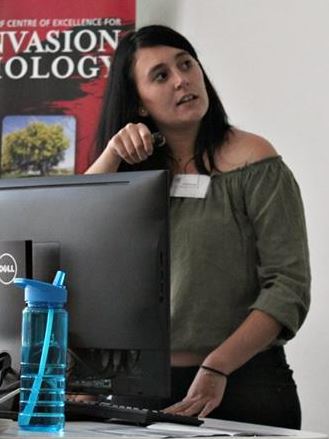
Natasha Kruger
Are tadpoles limiting the invasion of the African Clawed Frog?
Biological invasions are a major threat to biodiversity and ecosystem services on a global scale. One challenge is to anticipate the invasive potential of populations when introduced in a novel area and identify key parameters that may limit their spread. Climate-based models are limited as they cannot always identify the actual biophysical limits, especially for species with complex life cycles. For these species, most existing biophysical data is for adults while it may be larvae which are limiting distributions. It is therefore a challenge to collect relevant data and develop integrated ecological and evolutionary studies and distribution modelling which can elucidate the limitations of different life stages of invasive species. This PhD project focuses on the evolutionary responses at the larval stage of X. laevis in invaded areas of France and within the native range in South Africa. The approach is primarily experimental (in both France and South Africa) with supporting field-work. Data analysis and writing manuscripts for publication will be ongoing from first results.
PhD completed March 2020
Stellenbosch University & University of Lyon
Co-supervised by Jean Secondi - U. Lyon

Welri Nortje
Something smells fishy: Xenopus laevis uses olfactory cues when assessing pond potential
The African clawed frog, Xenopus leavis, is a highly invasive amphibian, native to sub-Saharan Africa. Anecdotal observations suggest that these fully aquatic frogs actively avoid fish. For my honours project I will be thoroughly investigating this observation. I will use an experimental setup to try and determine what cues the frogs use to detect the fish in ponds and if they are more likely to avoid some fish species (native) over others (invasive). The outcomes of this study may help us with the management of these frogs in parts of the world where they are unwanted by providing a biological solution to help stop invasion.
with Dr. James Baxter-Gilbert
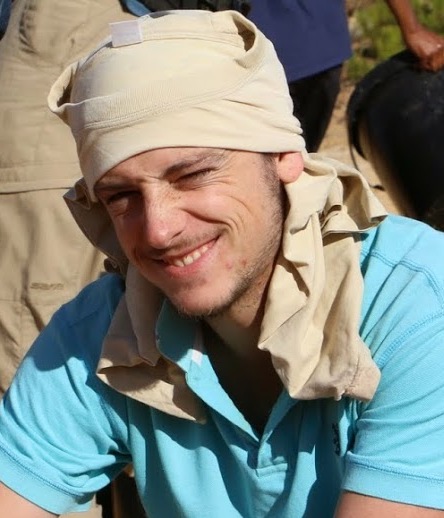
Alex Rebelo
Performance, morphology, dispersal and habitat-type of the southern African Pyxicephalidae
For my MSc I studied the Pyxicephalidae, the frog family that has undergone the largest frog radiation in South Africa and accounts for nearly half of the region’s frog species. This group exhibits high morphological diversity, extreme variation in area of range and different habitat preferences. This provides the opportunity to study the correlations of morphology and locomotory performance with the extent of geographic range and habitat-type. The first aim of my study is to uncover the common morphological and performance traits of pyxicephalid frogs that are correlated with extralimital range expansion, habitat specificity and geographic range. The second aim of my study is to determine whether ecologically relevant morphology and locomotory performance are the result of adaptation to novel habitats, or dispersal and conservatism within lineages of the pyxicephalid frogs. This study will determine whether morphology and dispersal, in combination with habitat, plays a major role in the extra-limital expansion or reserved distribution of some pyxicephalid frogs. In addition, the morphological and performance traits could indicate what ecological function these traits benefit. Finally, this study hopes to shed light on the evolutionary history of this family and recognise their potential to adapt with further habitat and climatic change imminent.
Graduated with distinction in March 2017
Stellenbosch University
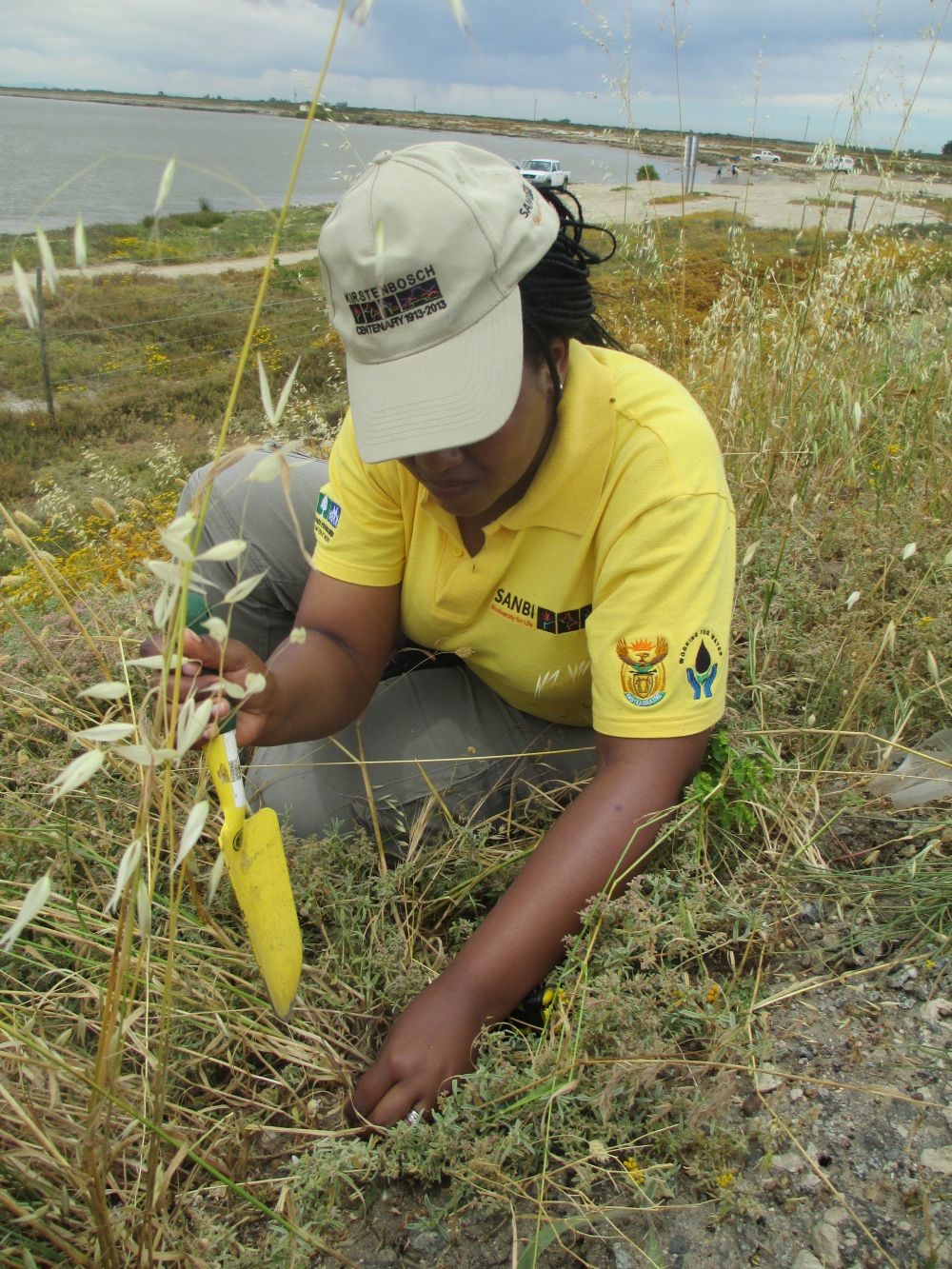
Nolwethu Jubase
Evaluating the effectiveness of citizen science to detect and report invasive species in Western Cape, South Africa
Observations by citizen scientists are important and have helped to build some valuable data collections and have contributed to several data management systems worldwide. Although citizen science programmes are commonly used to survey and monitor native species, more programmes are now targeting invasive species. However, very little research on the assessment of the effectiveness of citizen science to detect and report invasive species in South Africa has been carried out. Several data management systems exist to share information and data on invasive species (e.g. the South African Plant Invaders Atlas (SAPIA), data from municipal agents such as City of Cape Town (CoCT) face book page, Bodatsa, iNaturalist but these databases operate independently and are sometimes oriented toward particular taxonomic groups or regions. With this MSc project I aim to evaluate the effectiveness of citizen science to detect and report invasive species in the Western Cape, South Africa where I will (1) review invasive species reporting using different platforms and (2) assess the potential of different public awareness programs to increase citizen support to detect and report invasive species.
Graduated March 2021
Stellenbosch University
with Ross Shackleton (U. Lausanne)

Corey Thorp
Xenopus laevis: Its invasive impact on other Xenopus species
For my MSc I will be looking at the functional response (relationship between resource consumption and resource availability) between the African clawed frog (Xenopus laevis) and three Xenopus species found in southern Africa. The African clawed frog is an invasive species and has spread extensively across southern Africa, often as a result of their ability to exploit artificial water bodies. Another possible suggestion as to why they have been so successful in invading is due to their ability to utilize available resources. This may have a significant negative impact on local Xenopus populations, especially on the Cape platanna (X. gilli) which is considered endangered by the IUCN . I will also be looking at the role of cannibalism in Xenopus ecology, specifically looking at X. gilli and X. laevis. By identifying the predator-prey relationships of each Xenopus species, I will be able to provide insight into the ecological impact that each species has in their habitat as well as determine the invasive potential of X. laevis.
Graduated in March 2017
Stellenbosch University
James Vonesh & Mhairi Alexander
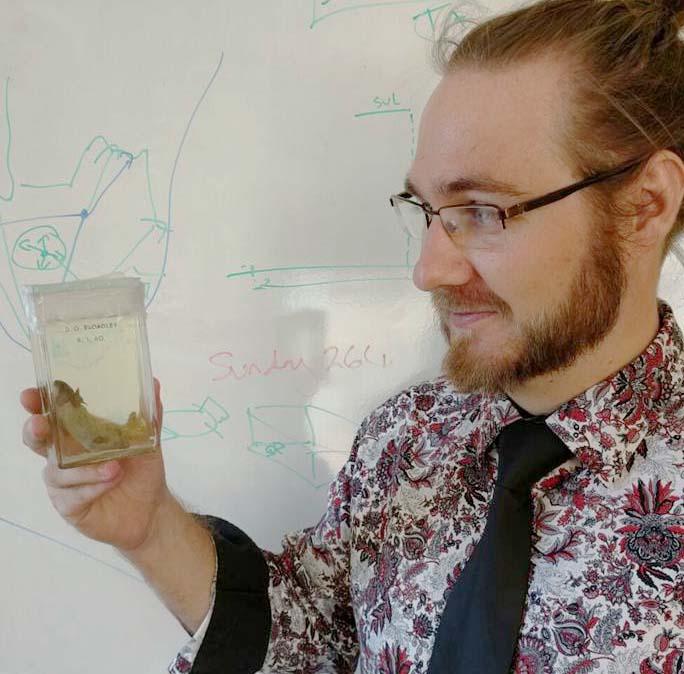
Hendré van Rensburg
Should I stay or should I go? Personality syndromes of migrating African clawed frogs.
I received my science degree in Biodiversity and Ecology last year from the University of Stellenbosch. During my final year of Undergraduate study I assisted John in his lab. I then decided to do my Honours this year with him where I am investigating behavioural syndromes or “personalities” of the African clawed frog Xenopus laevis; differentiating them into groups based on movement and exploration of a novel environment. I then plan on looking for correlations between what I find in the lab and movement data we have from these frogs from an on-going capture-mark-recapture project to untangle the ecological implications such personality variation might have.
Graduated in March 2017
Stellenbosch University

Debbie Fogell
Mind the Gap: Investigating the current cause of the range disjunction of the common platanna
Xenopus gilli, the Endangered Cape platanna, has one of the most limited distributions of the known Xenopus species and is confined to acid blackwater pools within the Western Cape, South Africa. Xenopus gilli is one of the many organisms in the Western Cape with a disjunct distribution on either side of False Bay. The aim of this study was to investigate the timing and presumed cause of this disjusntion through morphometric and mtDNA analysis.
Year completed: 2011
University of Cape Town
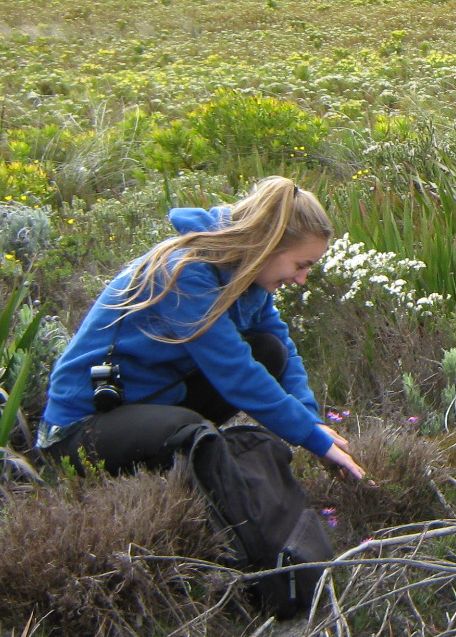
Emily Cressey
The conservation genetics of a newly recognised Cape Peninsula ndemic: Rose's Mountain Toad (Capensibufo rosei)
Declines and losses of amphibian populations are a global problem involving a complexity of interacting causes and amphibians in Africa are among those predicted to be hit the hardest by anthropogenic global change. Capensibufo rosei, Rose's Mountain Toad, is a range restricted species that survives in a few small, isolated montane populations in the extreme south-western Cape of South Africa. A recent study revealed that C. rosei comprises several cryptic species, but it was uncertain as to whether the lineage on the mountainous Cape Peninsula is endemic. This project aimed to test the hypothesis that toads from the Peninsula are form a single genetic lineage, but are distinct at a population level due to limited dispersal abilities and little if any gene flow.
Year completed: 2011
Completed at: Percy FitzPatrick Institute of African Ornithology
Co-supervisors: Krystal Tolley (SANBI) and Peter Ryan (Percy FitzPatric Institute)
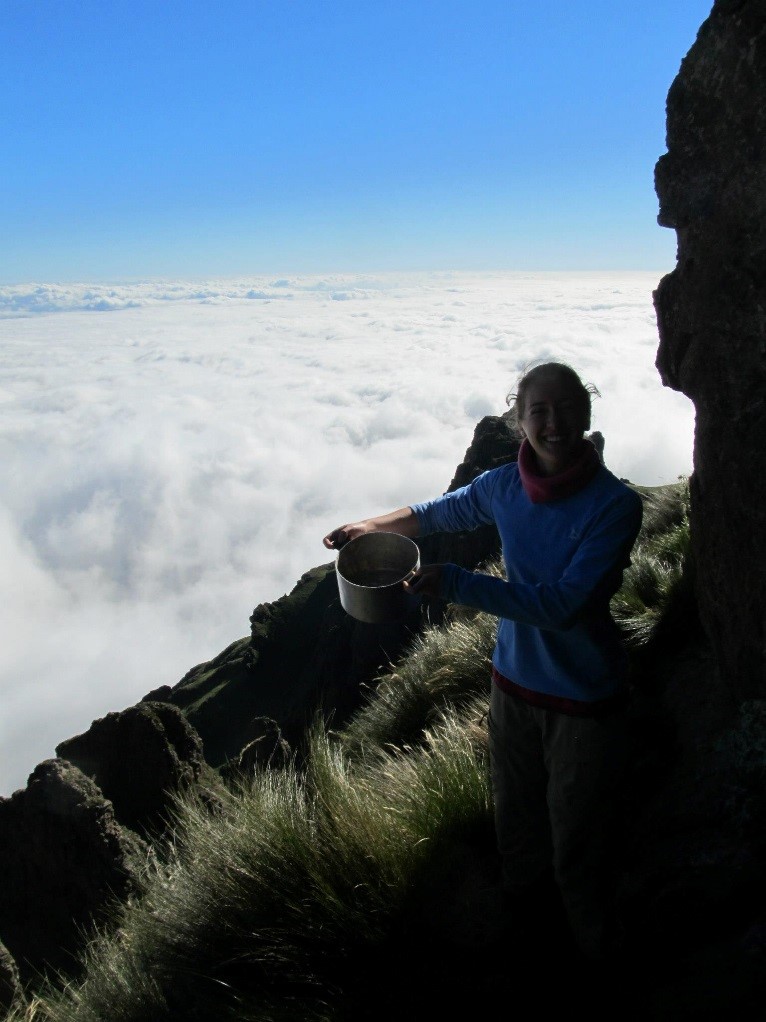
Marike Louw
Counting chirps
With this MSc, I aim to evaluate how populations of a frog species endemic to the Cape Peninsula, Arthroleptella lightfooti, are affected by invasions of exotic woody vegetation. The Fynbos Biome contains more invasions of alien plants compared to any other vegetation type in South Africa. The presence of invasive woody species such as Pinus pinaster and Acacia saligna in the mossy seepage habitat of these frogs may have an effect on the population densities of the frog. Higher degrees of invasion by the plants may result in lower population densities of A. lightfooti. This hypothesis will be explored using an acoustic Spatially Explicit Capture Recapture method (aSECR). An array of microphones arranged around a recording device can capture the chirp-like calls emitted by male A. lightfooti. These calls can be analysed using aSECR (noting which microphones did and did not capture a particular call). Together with information such as the differences between the time of arrival (TOA) and signal strength (SS) of each call across the different microphones, the density of calling frogs can be estimated. With the current global decline of amphibian populations, mastering effective means to evaluate or monitor amphibian populations is quintessential for conservation efforts.
From January 2016 to February 2018
Stellenbosch University
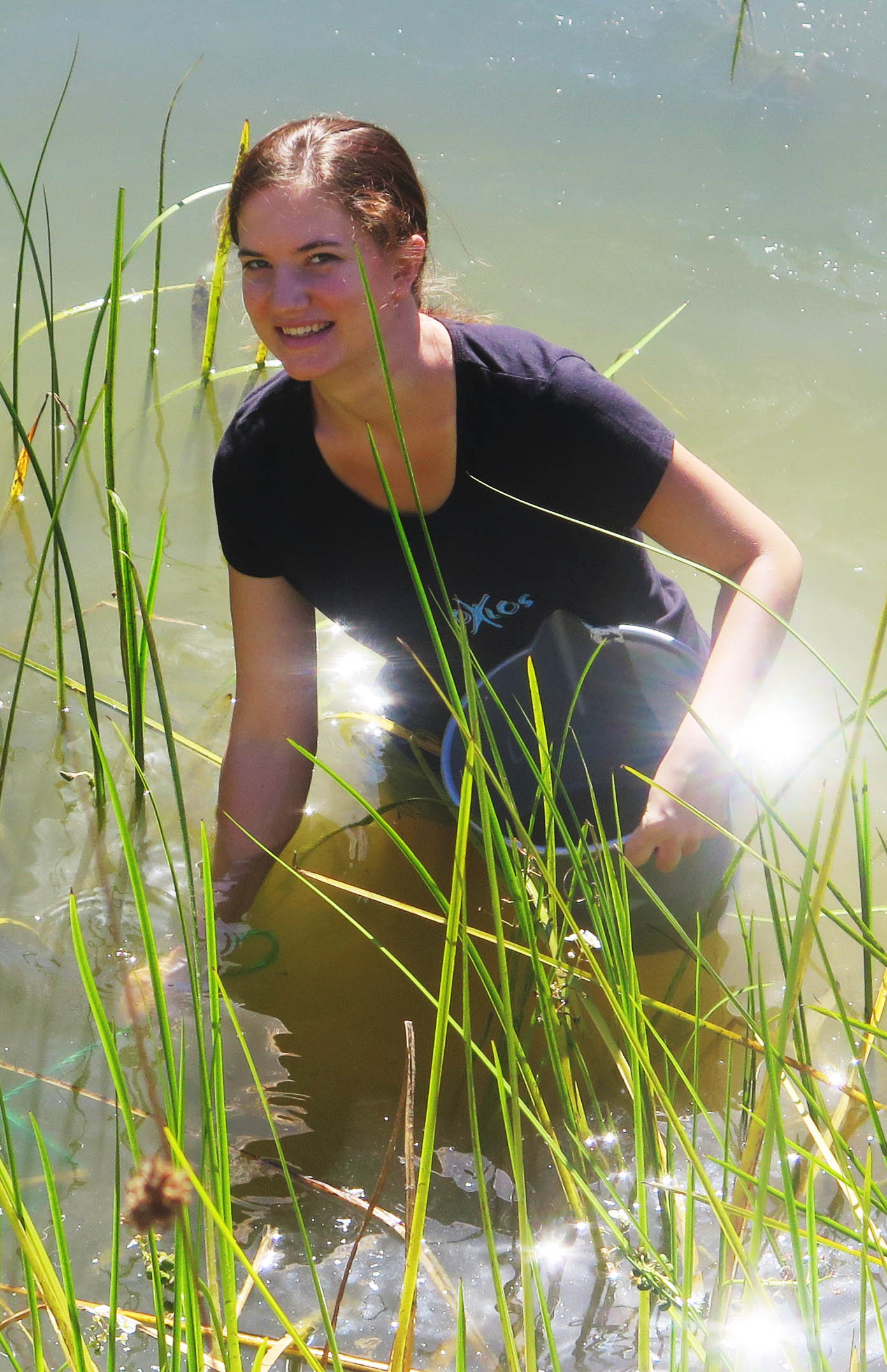
Annie Basson
I will survive! The effects of different predators on survival of early stages of African clawed frog
My study looks at the effects of different predators on three early life stages of Xenopus laevis. The three predators used are adult X. laevis, freshwater crabs and odonate larvae. These are all found in the same environment as the frogs, but have different expected effects on the survival rates of the life-history stages. The stages used are eggs, newly hatched larvae and tadpoles. X. laevis is an important invasive species, thus understanding its predator-prey relationships is important.
Graduated in March 2017
Co-supervised by James Vonesh
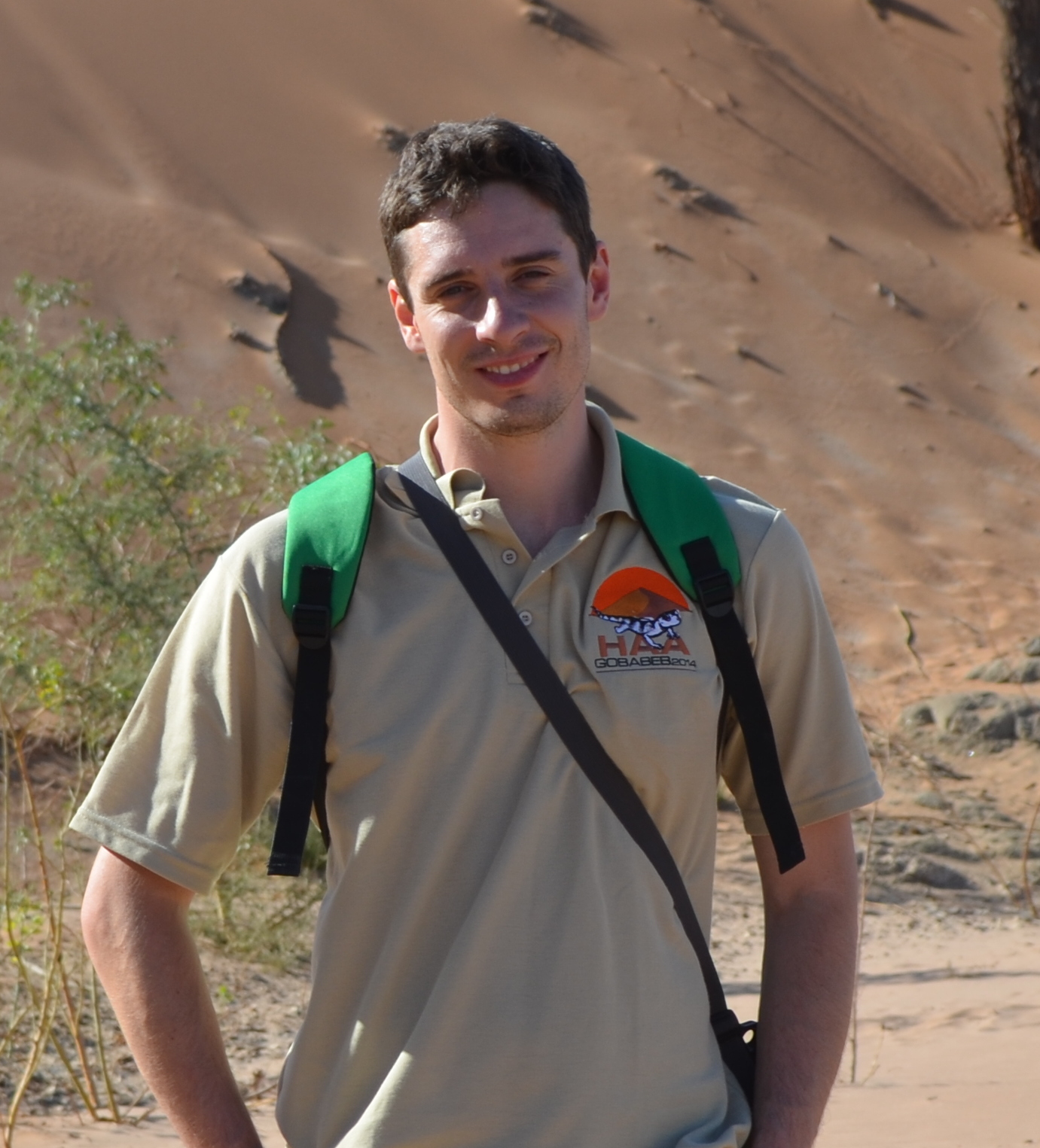
Giovanni Vimercati
Investigation of the guttural toad invasion in Cape Town through a multidisciplinary approach
Biological invasion of the guttural toad, a species accidentally introduced into Constantia (a suburb of the City of Cape Town) from another part of South Africa, probably as eggs or tadpoles with a consignment of aquatic plants (De Villiers 2006). The first alien record occurred in 2000 and the City of Cape Town started a control program in 2010 to limit its ongoing expansion. The invasion raises concern especially because is taking place within the range of the IUCN Endangered endemic western leopard toad Amietophrynus pantherinus.
Graduated in March 2017
Stellenbosch University
co-supervised by: Dr. Sarah Davies

André de Villiers
Performance, dispersal and demographics of Xenopus in the Cape
For my MSc I worked with two Xenopus species found in the South African Cape; the abundant (and invasive) Xenopus laevis (common platanna) and the IUCN Endangered X. gilli (cape platanna). Xenopus laevis is currently invading the native habitat of X. gilli at an alarming rate. My study aimed to compare the performance, as well as the distribution capabilities of both Xenopus gilli and X. laevis. The second aim of my study was to determine the population demographics for the two X. gilli populations. I also determined the demographics of X. laevis which are invading one of the X. gilli populations. This information will give some insight into the invasion capabilities of X. laevis and it will also help with the conservation efforts of X. gilli.
Graudated in March 2016
Stellenbosch University
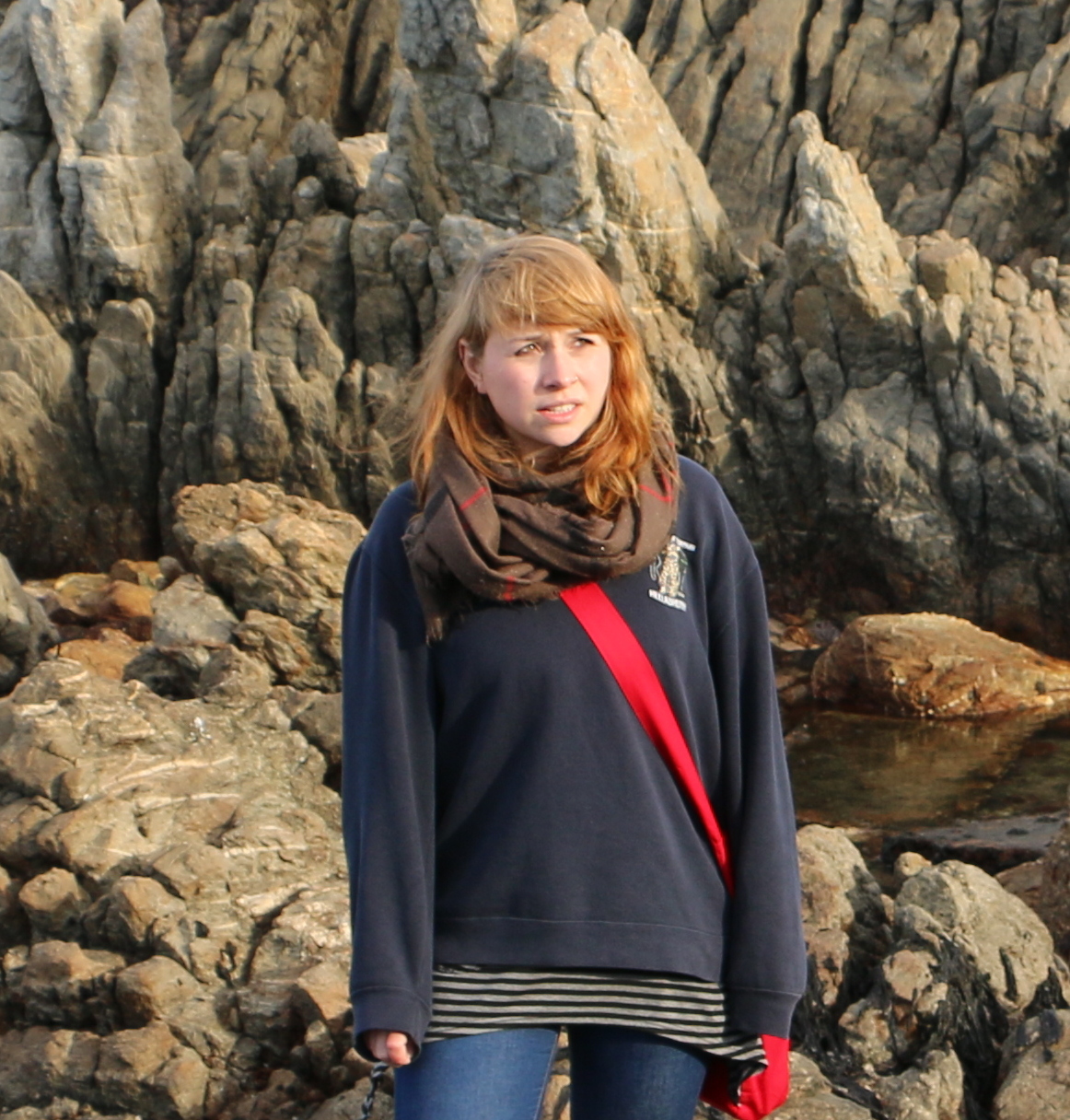
Solveig Vogt
Niche differentiation and feeding ecology of two sympatric species of Xenopus (Anura: Pipidae) from the Western Cape Province of South Africa
The endangered, endemic Cape Platanna (Xenopus gilli) and the invasive African-clawed Frog (Xenopus laevis) sympatrically inhabit a variety of freshwater habitats across the Western Cape Province in South Africa. In order to quantify the invasive species’ impact on sympatric populations of X. gilli, an assessment of the dietary requirements, patterns of interspecific competition and niche differentiation was conducted.
Graduated 2015
CIB & Zoologisches Forschungsmuseum Alexander Koenig
With Dennis Rodder
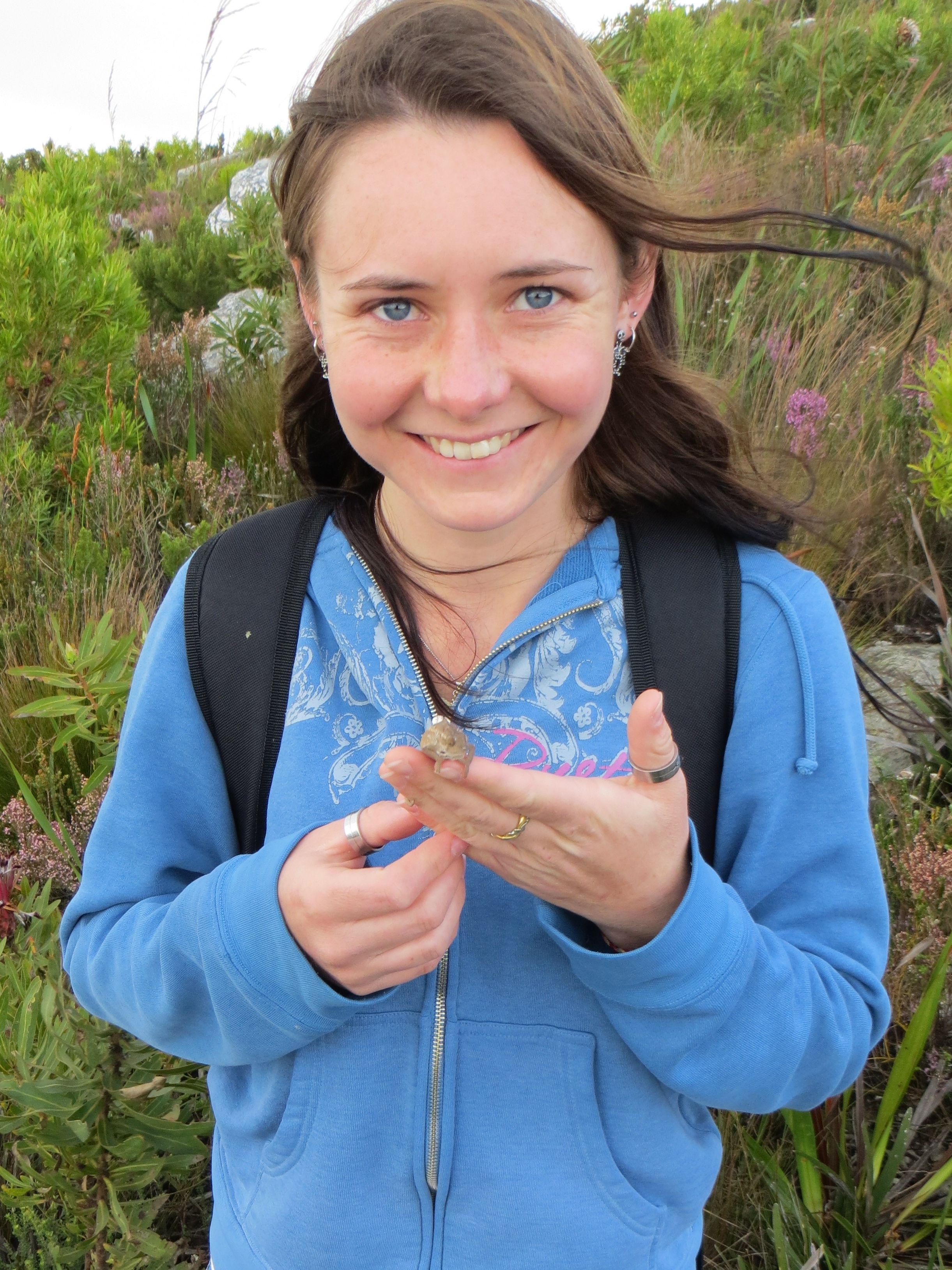
Liza Carne
Chameleons on the Cruise: Seasonal differences in prey choice of two dwarf chameleon species (Chameleondae: Bradypodion)
Only chameleons are classified as cruise foragers (an intermediate foraging mode between sit-and-wait and active foraging) but it is not known whether cruise foraging changes seasonally. Seasonal changes were investigated by sampling stomach contents and available prey from two dwarf chameleon species: Bradypodion ventrale (thicket habitat; low altitude) and B. taeniabronchum (fynbos habitat; high altitude) during winter and summer.
Graduated in 2013 Liza was also in a DST-NRF Internship Position in 2013
Completed at: Nelson Mandela Metropolitan University
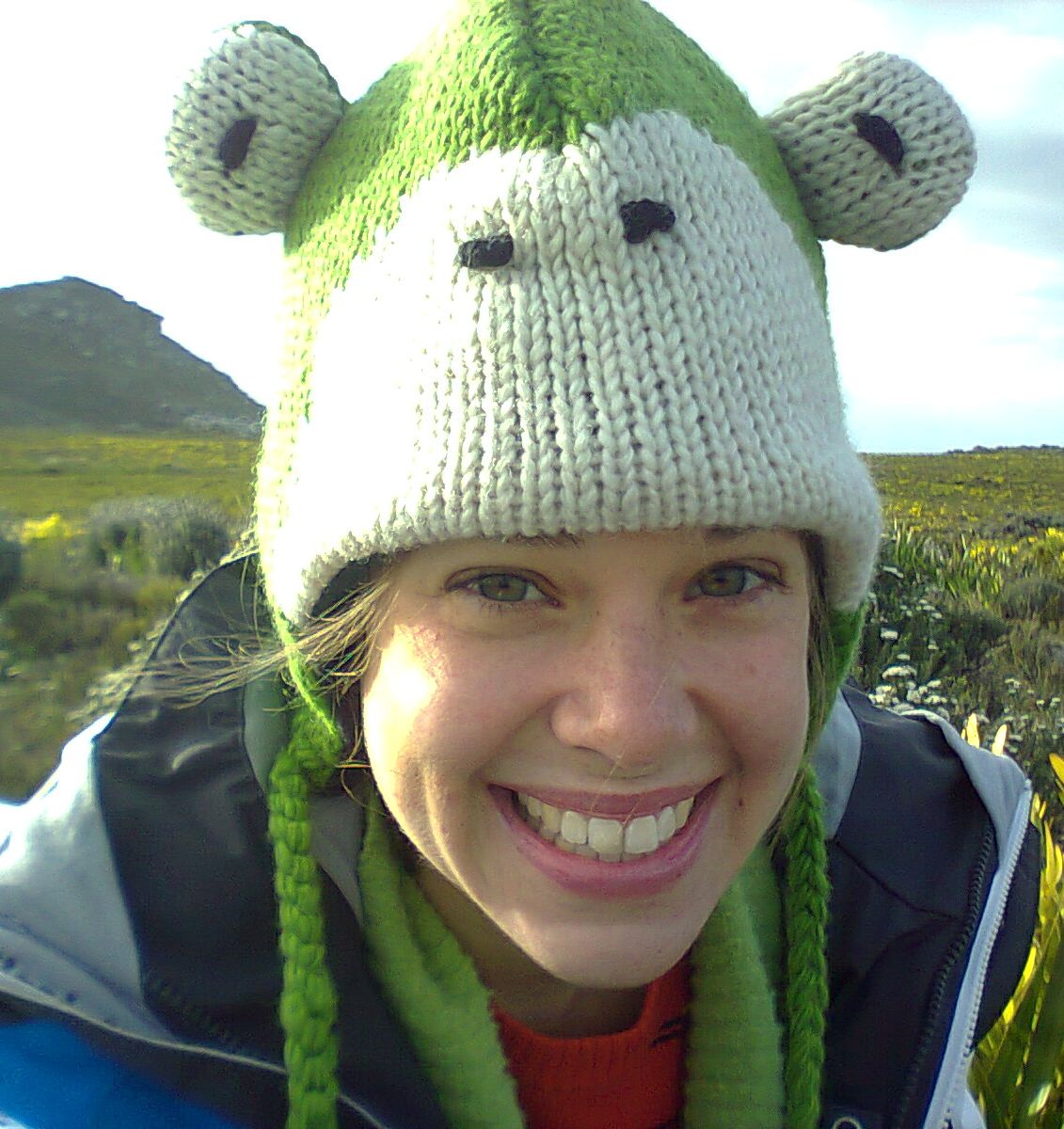
Tanya Scott
Monitoring frog density through calls on Table Mountain
Traditional methods of monitoring frog populations involve estimating the numbers of calling males or marking and recapturing individuals. This project builds on an exciting new method which combines both techniques using an array of six microphones. The aim is to determine the changes in call density of a focal population of Arthroleptella lightfooti on Table Mountain. Our new method represents a way to monitor these and other frogs without the need to disturb them or their habitat. Call data were used to produce density interpolations of calling males, to determine the variation in seasonal call data and would provide insight into the calling ecology of this species.
Graduated in 2013
Completed at: University of Cape Town
Co-supervisors: Res Altwegg (SANBI-UCT)
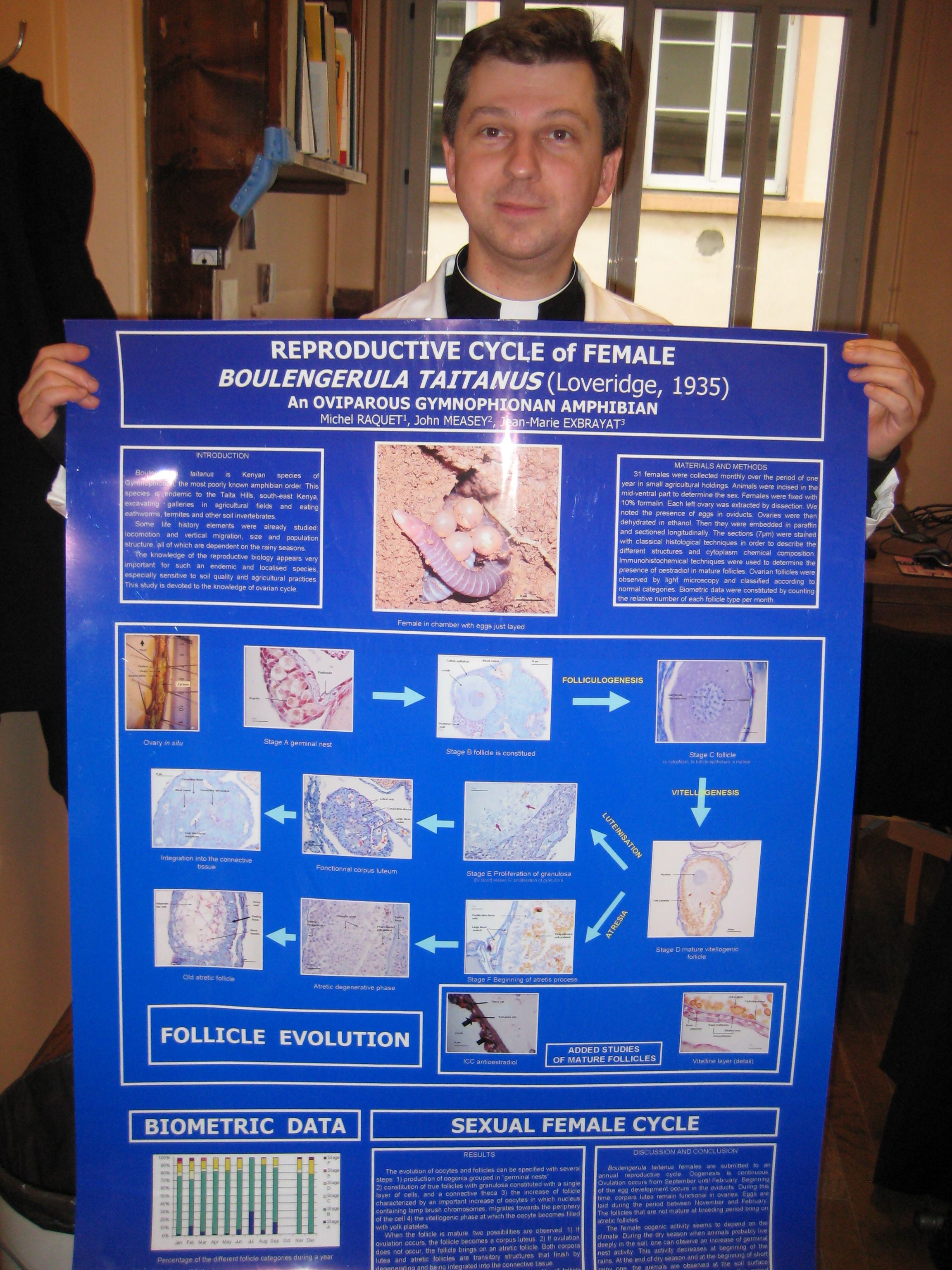
Michel Raquet
Seasonal and hormonal regulation of the female genital tract in oviparous and viviparous amphibians
Gymnophiona are elongated and burrowing amphibians living in tropical countries. Their reproductive biology is still poorly known and only a few species have been studied. Boulengerule taitanus lives in the cold forests of the Taita Hills, Kenya. This area undergoes two rainy seasons, a long season (March to May) and a shorter season (November to December) during which eggs and juveniles have been observed. In this work, the reproductive cycle of females is described for the first time.
Years: from 2009 to 2014
Universite Catholique de Lyon
Principle Supervisor: Jean-Marie Exbrayat